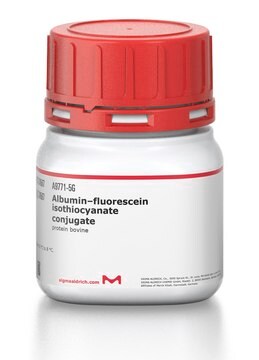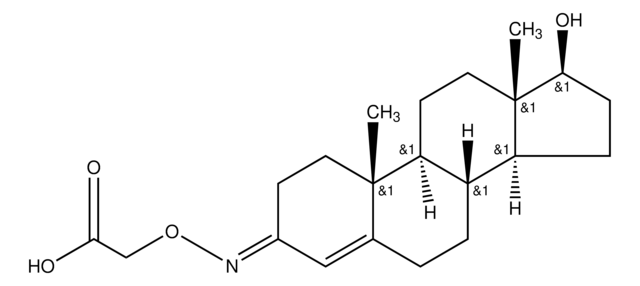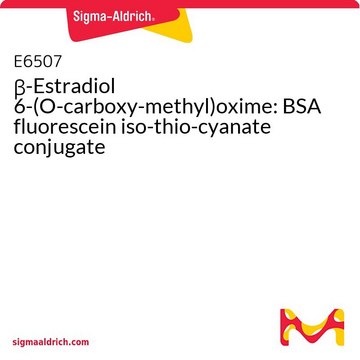T5771
Testosterone 3-(O-carboxymethyl)oxime: BSA - fluorescein isothiocyanate conjugate
About This Item
Productos recomendados
assay
≥98.00% (TLC)
Quality Level
form
powder
drug control
regulated under CDSA - not available from Sigma-Aldrich Canada
extent of labeling
~3 mol FITC per mol BSA
~10 mol steroid per mol BSA
technique(s)
flow cytometry: suitable
solubility
water: 1.90-2.10 mg/mL, clear to faintly hazy, orange
shipped in
ambient
storage temp.
2-8°C
Application
Biochem/physiol Actions
signalword
Warning
hcodes
Hazard Classifications
Acute Tox. 4 Dermal - Acute Tox. 4 Inhalation - Acute Tox. 4 Oral - Carc. 2
Storage Class
11 - Combustible Solids
wgk_germany
WGK 3
flash_point_f
Not applicable
flash_point_c
Not applicable
ppe
Eyeshields, Gloves, type P3 (EN 143) respirator cartridges
Elija entre una de las versiones más recientes:
¿Ya tiene este producto?
Encuentre la documentación para los productos que ha comprado recientemente en la Biblioteca de documentos.
Los clientes también vieron
Nuestro equipo de científicos tiene experiencia en todas las áreas de investigación: Ciencias de la vida, Ciencia de los materiales, Síntesis química, Cromatografía, Analítica y muchas otras.
Póngase en contacto con el Servicio técnico










